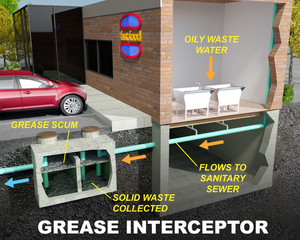
Dumpster rental is an efficient way to dispose of a lot of waste at once. It saves time and money over transporting waste in cars and paying fines for violating landfill protocol.
Make sure that the dumpster you rent is the right size for the amount of waste you will be throwing away. Some items may not be accepted, such as stumps and mattresses. Ask about the dumpster’s availability and the pickup schedule. Contact your local Dumpster Rental Maryland for more details.
Cost
Whether you’re undertaking a major home renovation or just cleaning out your garage, renting a dumpster can be cost-effective. The price depends on the size of dumpster you choose and how long you keep it. Typically, you can expect to pay around $250 for a 16-cubic-yard dumpster. If you’re unsure about which size to rent, consult with your local waste management company.
A dumpster rental can be more cost-effective than hiring a junk removal company, as there are additional costs involved in picking up and dropping off trash. For instance, junk removal companies have to take several trips back and forth to the landfill. This can leave behind a large carbon footprint.
In addition to these extra costs, dumpster rental prices can also vary based on location. Prices may increase in areas where there are higher taxes or gas prices. This is particularly true in urban areas, where the cost of living can be more expensive. The price of a dumpster can also be affected by local recycling and disposal policies. Some items, such as paint and hazardous waste, require special disposal methods, and you’ll need to research municipal options before disposing of them with a dumpster.
Dumpster rentals come in a variety of sizes and are often used for construction or residential purposes. Some are even designed to be placed on public property, such as streets and sidewalks. The cost of a dumpster rental can also depend on its size and whether it’s used for a commercial or residential project.
Some companies offer flat-rate dumpster rental pricing, which means you’ll pay one fee for the entire rental period. This includes a pre-agreed upon weight limit, delivery, pick up, and taxes. However, it’s important to note that this method can end up costing you more if you go over the weight limit or use certain prohibited trash types.
There are other fees, such as dry run and relocate fees, that can also affect the cost of a dumpster rental. These are less common, but they’re worth mentioning as they can significantly impact your final bill. These fees are charged if you don’t put the dumpster away at its designated location, and they can be costly to your budget.
Convenience
Dumpster rental is a convenient way to manage waste. From commercial cleanouts to spring residential renovations, dumpsters make the process of disposing of large quantities of debris easy and affordable. A roll-off dumpster is the most popular choice for this purpose, and it can accommodate everything from furniture to drywall. You can find a local recycling company that provides this service in your area by searching online. Some companies even provide drop-off and pick-up services. The cost of a dumpster will vary based on the size and weight, as well as the amount of debris you’re throwing away. The smallest dumpsters are usually 10 feet long and can hold up to 3 tons of debris. If you’re planning a larger cleanup project, you can rent a 20-yard dumpster that is the length of two parking spaces.
The profitability of a dumpster rental business depends on several factors, including location, competition, and pricing. Having a strong business plan is critical to achieving success and building a loyal customer base. This includes setting clear goals and outlining the strategies you’ll use to achieve them. You should also research your competitors to understand their pricing and service offerings. This information will help you position your business for future success.
In addition to a solid business plan, a dumpster rental business requires careful management of its finances. There are several different options for financing a new business, including traditional bank loans, equipment leasing, and small business grants. A financial advisor can help you evaluate these options and decide which one is best for your needs.
Another important factor in the success of a dumpster rental business is excellent customer service. This involves providing fast response times and transparent communication with customers. It also means going above and beyond to meet customers’ needs, such as offering flexible rental terms or giving advice on dumpster sizes.
A successful dumpster rental business requires a team of skilled and dedicated employees. It’s essential to hire and train workers with the necessary skills for the job, and to create a culture of accountability and trust. You should also promote a positive work environment to increase employee morale and productivity. This can be done by establishing clear expectations, offering incentives for performance, and providing regular feedback.
Environmental impact
The dumpster rental industry is not only a convenience for homeowners and contractors, but it also promotes environmental sustainability. Many companies specialize in recycling and repurposing construction debris, which helps to minimize the amount of waste that ends up in landfills. These companies work with local facilities to ensure that the recycled materials are disposed of in an eco-friendly manner. Moreover, they educate the community about waste reduction and proper sorting practices.
Dumpster rental services are also a good option for businesses that generate a large amount of waste. These containers are suitable for a wide range of materials, including metals, wood, and concrete. They can also be used for hazardous materials such as chemicals and medical waste. This approach to waste disposal reduces the need for multiple trips to the dump site and cuts down on carbon emissions.
Another benefit of dumpster rental is that it helps to reduce air pollution. Burning garbage produces harmful gases that can destroy the ozone layer over time. This is a major problem that we need to address. Dumpster rentals are a great solution for reducing air pollution because they allow people to dispose of their waste without burning it.
In addition, dumpster rental services provide an opportunity to donate or sell reusable items that can be reused by others. This helps to reduce the amount of waste that ends up in landfills and benefits local communities. It is also important to follow local regulations when disposing of waste, as improper dumping can cause serious environmental and health problems.
The dumpster rental industry is growing at a rapid rate, and it has many positive impacts on the environment. In addition to providing convenient waste management solutions, it helps to recycle a significant percentage of the waste generated in the country. This not only helps to protect the environment, but it also provides a vital source of revenue for the economy.
Safety
It is essential for dumpster rental businesses to follow strict safety protocols to mitigate risks and ensure a smooth waste disposal process. These measures include ensuring that dumpsters are placed in a safe location, loading them correctly, and complying with waste disposal regulations. They also need to be properly maintained to prevent damage or wear and tear. In addition, they should provide training for employees on safety procedures and equipment. This can help prevent accidents and injuries in the workplace, which can lead to costly legal disputes.
Another way to reduce risk is by creating strategic partnerships with local businesses that regularly need dumpster services. This could include construction companies, home renovation businesses, and event planners. Developing these relationships through networking events and community outreach can help you build your business. Using social media and other marketing strategies can also expand your reach and increase customer retention.
Safety should be a top priority in any business, but it is particularly important for dumpster rentals, which involve the use of heavy equipment and potentially hazardous materials. Following these essential safety guidelines can help minimize risks and promote a positive working environment for all employees. These precautions include wearing appropriate safety gear, avoiding unauthorized access, and establishing clear work procedures.
It is also crucial to avoid overfilling the dumpster, as this can put unnecessary strain on the unit and result in a dangerous situation for anyone who uses it. Each dumpster size has its own weight limit, and exceeding it can cause damage to the container and cost the renter extra money. The best way to avoid this is to carefully plan your project and consult with the dumpster company about its capacity before you begin dumping.
Regular inspections of the dumpster are also vital for ensuring that it is safe to use. This is because these inspections can help identify potential hazards, such as structural damage, corrosion, or wear and tear. If these problems are not addressed promptly, they can lead to serious health and safety issues. Regular maintenance of the dumpster can also help reduce the risk of fires and explosions caused by volatile chemicals or gasses.








